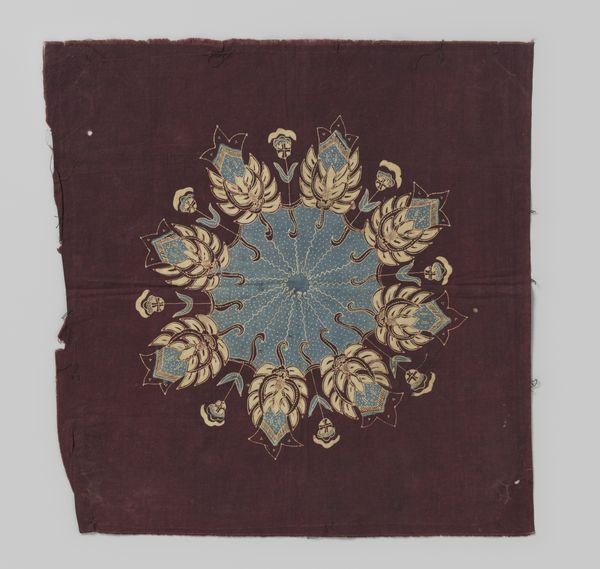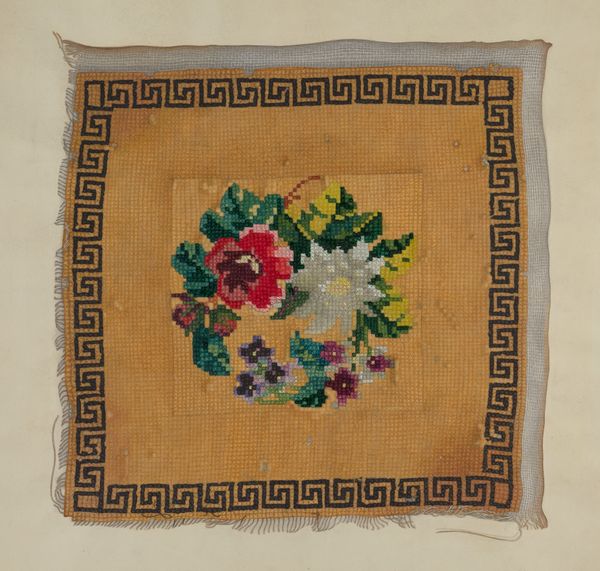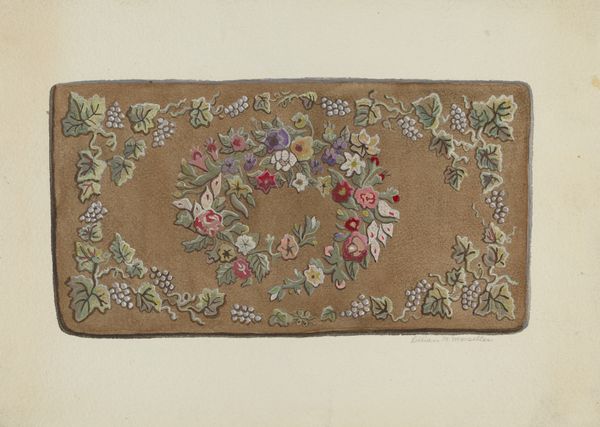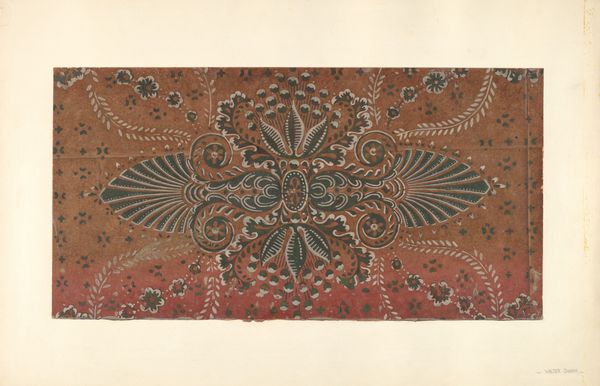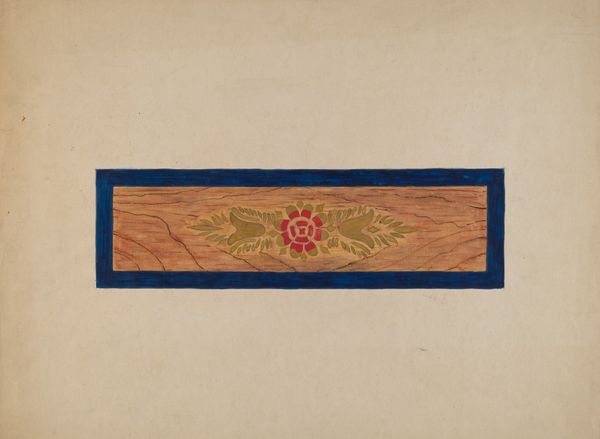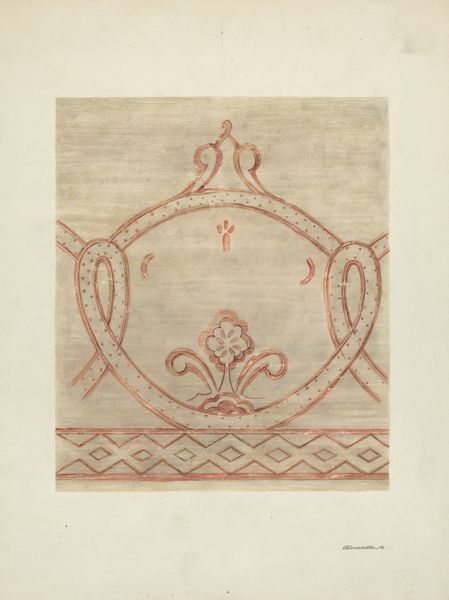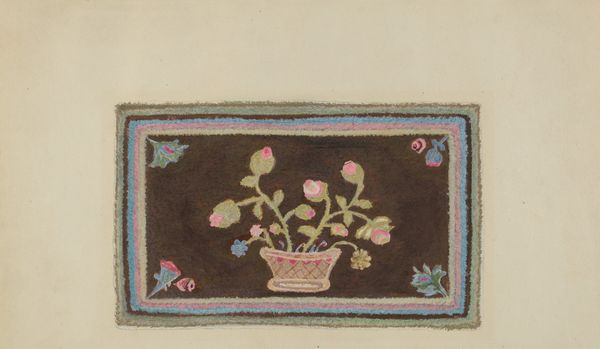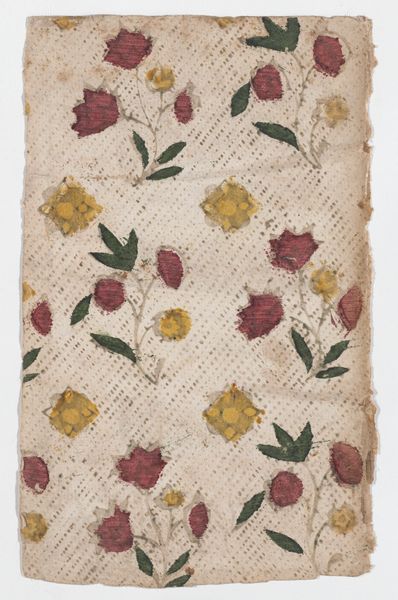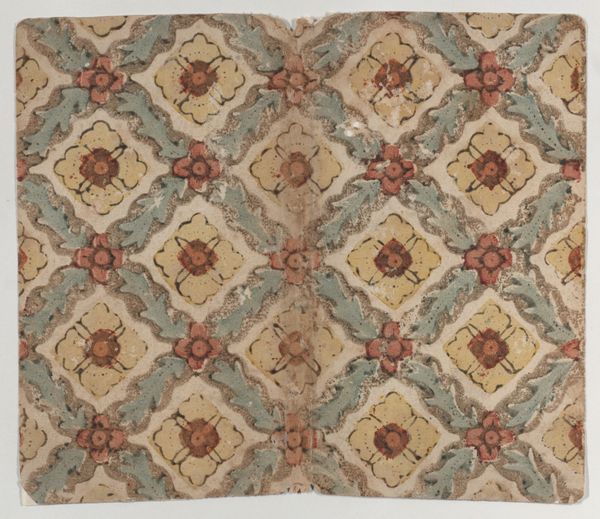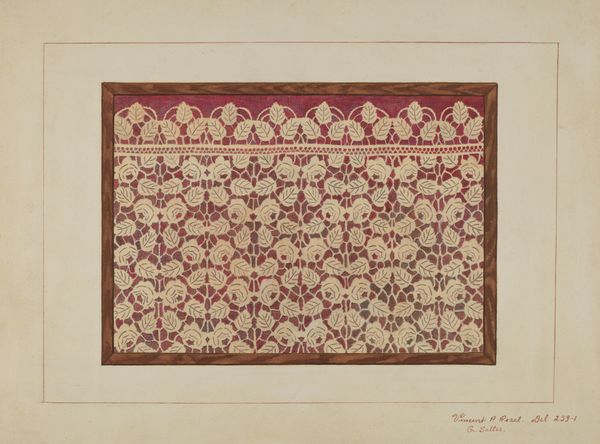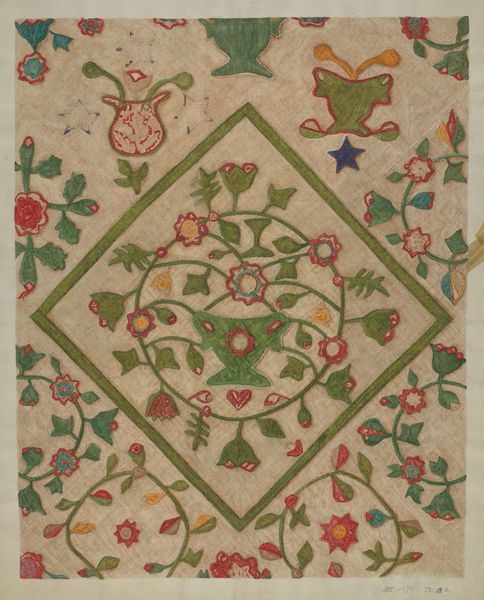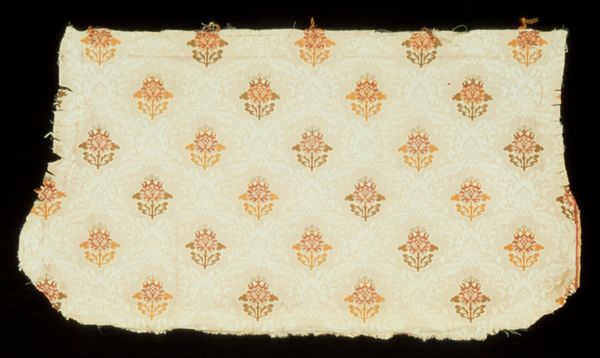
drawing, watercolor
#
drawing
#
water colours
#
watercolor
#
coloured pencil
#
folk-art
#
decorative-art
#
watercolor
Dimensions: overall: 22.9 x 29.8 cm (9 x 11 3/4 in.) Original IAD Object: 27" long; 17 1/2" wide
Copyright: National Gallery of Art: CC0 1.0
Curator: What a charming and simple composition! It evokes a feeling of warmth, almost homemade, and it strikes me as particularly decorative in intent. Editor: Indeed. This is a watercolor and colored pencil drawing titled "Hooked Rug" by Lillian M. Mosseller, created around 1936. It’s interesting to consider it not just as a depiction, but also an engagement with folk art and the decorative arts movement. Curator: Folk art provides vital social and historical insight here, doesn't it? A rug is inherently functional, and its decoration reflects the culture it was crafted within, speaking volumes about the artist’s relationship with their immediate surroundings, their values. Editor: Exactly. This era, even in drawing, sees many artists examining domestic crafts and their association with working class labor and its aesthetic. Do you feel there’s commentary in choosing to draw it rather than create it, about the value judgments related to different types of craft and fine art? Curator: Perhaps! One can ask to what extent Mosseller attempts to both honor and elevate this type of craftsmanship by using watercolours and colored pencil, challenging notions of the readymade within art production through the medium of traditional rendering. I mean, that colour palette of browns, reds, and yellows feels very grounded and handmade in themselves! Editor: I think you make a key point; the work could suggest ideas related to gendered labor, given that rug-hooking historically involves feminine association with homemaking and textile production. I am left thinking what place an image such as this might occupy within a broader exhibition narrative about class and cultural capital, and folk imagery in modern America. Curator: I agree! I find myself wondering, even beyond that, about the role such imagery plays within institutional display and collections like ours. How is this different from a simple commercial transaction and is that distinction even relevant anymore? Editor: Certainly, many angles and directions from which we can begin to contextualize such imagery. Hopefully our listeners gained as much insight as we have.
Comments
No comments
Be the first to comment and join the conversation on the ultimate creative platform.
